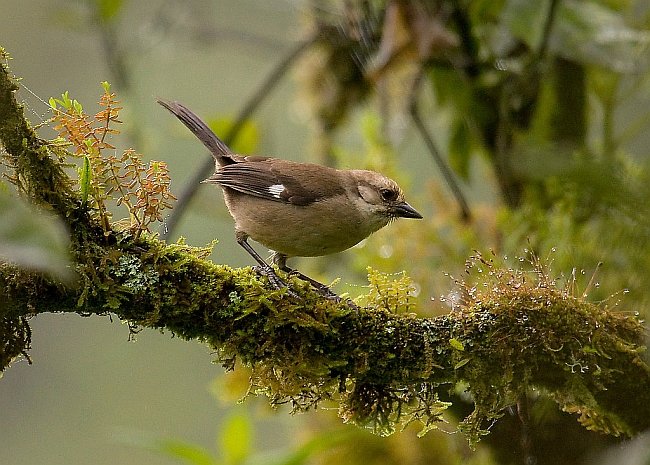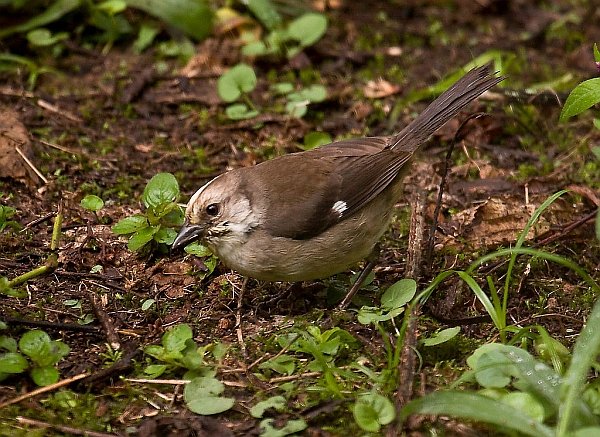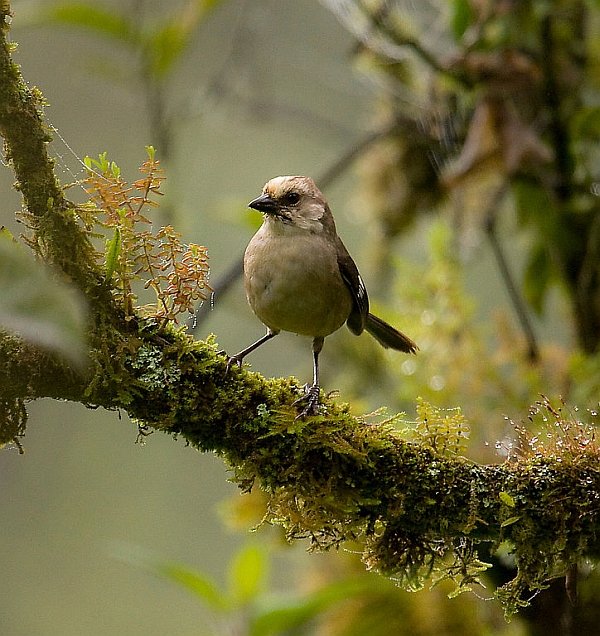
There are many charismatic endangered birds that capture people’s hearts and imaginations: the colossal California Condor, the evocative Red-crowned Crane, and the adorable Spoon-billed Sandpiper come to mind. However, there are those species which have a hard time bringing attention to themselves such as Yellow-shouldered Blackbird, Giant Nuthatch, and Vinaceous-breasted Parrot. Regardless of their popularity, these species and the threatened ecosystems they inhabit are equally spectacular. This is a short series that brings attention to these incredible birds, and my various adventures to try and see them.
Although not the most strikingly patterned member of its genus, Pale-headed Brush-Finch (Atlapetes pallidiceps) must be among the rarest. Probably never common, this species has always been restricted to brushy growth in the narrow transition zone between dry lower elevations and more humid higher elevation forest. Currently endemic to a single valley system in the Andes of Ecuador, this species escaped detection from researchers for thirty years until the rediscovery of a few pairs in November 1998 by Dr. Neils Krabbe. At the time of its rediscovery, only about a half-dozen pairs were known to exist. Teetering on the brink of extinction, environmental organizations bought the last remaining parcels of suitable habitat that could still harbor this species, creating the Yunguilla Preserve (currently managed by Fundación Jocotoco as part of their overall preserve network). Currently, the population is near saturation point in this small preserve at about 226 mature individuals — it is simply too small to host more breeding territories. Brood parasitism from Shiny Cowbird is also a major issue (42% parasitism rate if unmanaged).
Pale-headed Brush-Finch are usually feeding on or near the ground. Photo by Dušan Brinkhuizen (www.sapayoa.com)
In November 2010, I backpacked for fifty days via the reasonably good bus system in Ecuador. I had just completed the southern circuit of the country, connecting with many fabulous species, experiences, and places of the region — lekking Long-wattled Umbrellabird, the magnificent Ceiba trees and Tumbesian endemics of Jorupe Preserve, more than a dozen antpittas (including the famous Jocotoco Antpitta), and more. Heading back north towards Quito, I broke up the long bus ride with a couple days in the picturesque city of Cuenca.
To observe this species, I had to first inform Fundación Jocotoco ( www.fjocotoco.org / reservations@fjocotoco.org) of my visit so that they could arrange a ranger to escort me while there. After what seemed long a long ride through winding mountain roads, I arrived via bus to the dirt road that leads to the preserve and walked the remaining 850 meters to the entrance. At first, the ranger was nowhere to be seen, but after speaking in Spanish to some of the locals, I was finally able to connect in the late morning. The warm, clear, and sunny day coupled with the late start were not boding well.
Like all birds, every species has a background story that adds color and depth even though it might not be colorful or strikingly patterned. Photo by Dušan Brinkhuizen (www.sapayoa.com)
The ranger and I set forth along the trail system of this small preserve, looping around it entirely without a trace of the brush-finch (and low bird activity overall). However, at the end of our second loop through some denser scrub, we both heard some soft chipping and rustling in the undergrowth. “Espera aqui” (wait here) the ranger told me, directing my gaze to an area where he thought the bird would soon be visible. And I waited. A tense fifteen minutes passed and the bird would still not oblige, but patience eventually paid off. A single individual eventually worked its way into view, and I got to enjoy this troubled species. The knowledge of its population status, ecology, and background story added color, depth, and meaning to what I was seeing — a species that disappeared from science, was rediscovered, and brought back from the brink of extinction. How fortunate I was to have the opportunity to observe this species in this remote part of Ecuador.













I take pride in the fact that very good friends of mine, Martin Schaefer and Vero Schmidt, played no small part in the recovery of the species. Now, to go and see it for myself… Thanks for the great post!!